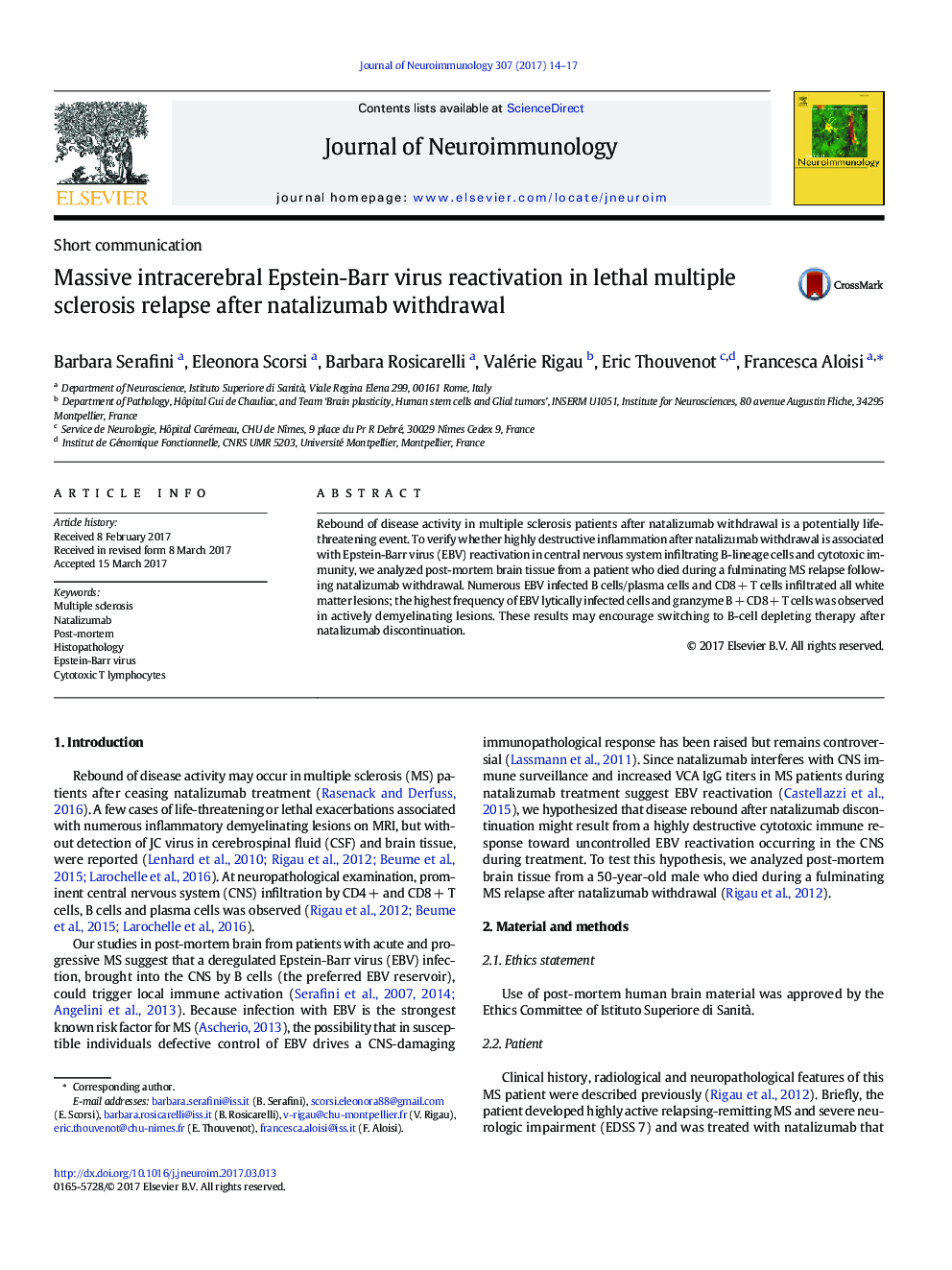| کد مقاله | کد نشریه | سال انتشار | مقاله انگلیسی | نسخه تمام متن |
|---|---|---|---|---|
| 5630341 | 1580368 | 2017 | 4 صفحه PDF | دانلود رایگان |
- Post-mortem brain from an unusual, fulminant case of MS after natalizumab withdrawal is analyzed.
- Widespread EBV latent and lytic infection is found in multiple white matter lesions.
- EBV lytically infected cells and granzyme B+Â CD8+Â T cells are more frequent in active lesions.
- Uncontrolled EBV reactivation in the CNS during natalizumab therapy causes hyperinflammation after drug discontinuation.
Rebound of disease activity in multiple sclerosis patients after natalizumab withdrawal is a potentially life-threatening event. To verify whether highly destructive inflammation after natalizumab withdrawal is associated with Epstein-Barr virus (EBV) reactivation in central nervous system infiltrating B-lineage cells and cytotoxic immunity, we analyzed post-mortem brain tissue from a patient who died during a fulminating MS relapse following natalizumab withdrawal. Numerous EBV infected B cells/plasma cells and CD8Â + T cells infiltrated all white matter lesions; the highest frequency of EBV lytically infected cells and granzyme BÂ + CD8Â + T cells was observed in actively demyelinating lesions. These results may encourage switching to B-cell depleting therapy after natalizumab discontinuation.
Hypothetical model of EBV-driven CD8Â + T-cell mediated CNS hyperinflammation in lethal multiple sclerosis relapse after natalizumab withdrawal.385
Journal: Journal of Neuroimmunology - Volume 307, 15 June 2017, Pages 14-17
